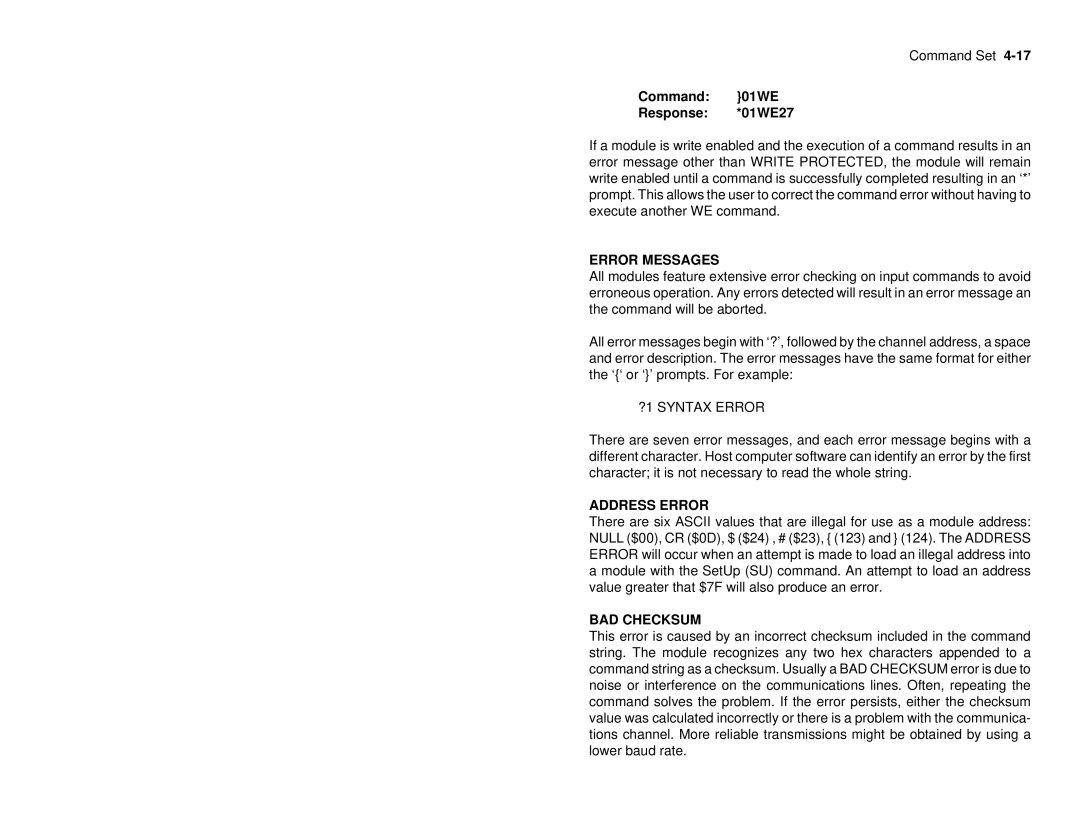Command Set
Command: }01WE
Response: *01WE27
If a module is write enabled and the execution of a command results in an error message other than WRITE PROTECTED, the module will remain write enabled until a command is successfully completed resulting in an ‘*’ prompt. This allows the user to correct the command error without having to execute another WE command.
ERROR MESSAGES
All modules feature extensive error checking on input commands to avoid erroneous operation. Any errors detected will result in an error message an the command will be aborted.
All error messages begin with ‘?’, followed by the channel address, a space and error description. The error messages have the same format for either the ‘{‘ or ‘}’ prompts. For example:
?1 SYNTAX ERROR
There are seven error messages, and each error message begins with a different character. Host computer software can identify an error by the first character; it is not necessary to read the whole string.
ADDRESS ERROR
There are six ASCII values that are illegal for use as a module address: NULL ($00), CR ($0D), $ ($24) , # ($23), { (123) and } (124). The ADDRESS ERROR will occur when an attempt is made to load an illegal address into a module with the SetUp (SU) command. An attempt to load an address value greater that $7F will also produce an error.
BAD CHECKSUM
This error is caused by an incorrect checksum included in the command string. The module recognizes any two hex characters appended to a command string as a checksum. Usually a BAD CHECKSUM error is due to noise or interference on the communications lines. Often, repeating the command solves the problem. If the error persists, either the checksum value was calculated incorrectly or there is a problem with the communica- tions channel. More reliable transmissions might be obtained by using a lower baud rate.
